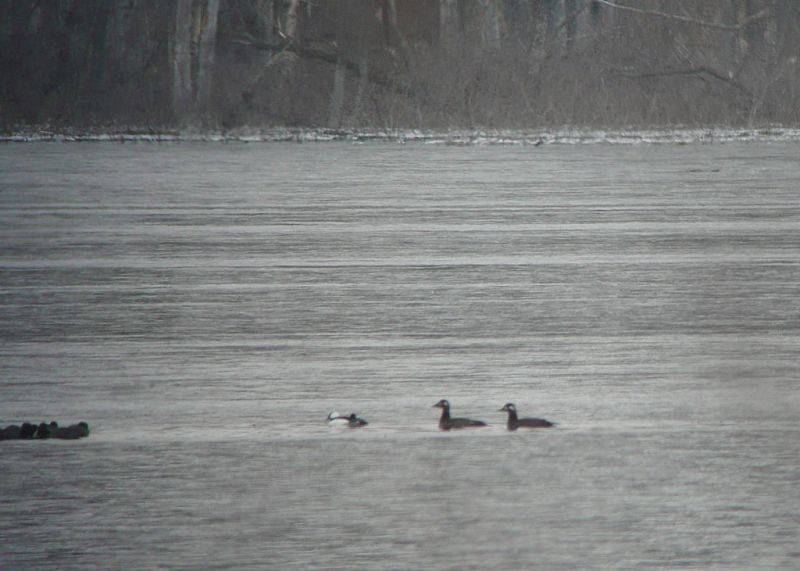White-winged Scoters provide a nice surprise at Killbuck Marsh Wildlife Area
The cold, snowy weather that began at the beginning of December seemed to provoke lots of birds to head south. I can't say that I blame them. At any rate there was a big flight of loons passing overhead near Sugarcreek on Saturday, December 4. Ed Schlabach reported that the loons were very high but findable by scanning the sky with binoculars. The bulk of the birds were observed between 9:00 and 10:30 in the morning. As expected almost all of them were Common Loons but Ed picked out at least two Red-throated Loons. I also heard a second-hand report of 200+ Common Loons and one Red-throated counted west of Walnut Creek on the same day.
It is amazing how many loons pass over Ohio each spring and fall. When you consider that most likely the loons were moving south across most or all of Ohio, seeing 450 from one spot gives you an idea of how many there must have been that day. Plus, there had already been a number of good loon flights in November.
While others were watching loons, Larry Richardson, a birder from Cleveland, made a stop at the Killbuck Marsh Wildlife Area south of Wooster. From a viewpoint on Cemetery Road Larry saw what he thought were two White-winged Scoters. From a distance it is sometimes hard to separate White-winged from Surf Scoters, especially since the white on the wings doesn't always show when the birds are floating on the water. All three species of scoters are sea ducks and quite uncommon here.
Fortunately I was at home when Larry gave me a call. By the time I arrived at the marsh, Larry was gone. Most of the marsh along Cemetery Road was covered with ice. Scanning with the binoculars helped me see a small flock of American Coots, two Mute Swans and a number of other ducks. All of them were quite far away but visible through a spotting scope. At first there didn't seem to be any scoters with the Coots, but soon one popped up after a dive, followed by a second bird. Before I could decide for sure on their identity, both birds took off and flew around for 30 seconds or so and then landed in the small patch of open water again. In flight the large white patches on the wings were obvious.
I watched them dive and swim around for quite awhile and took some photos through the scope, then turned my attention to the other ducks, 100 yards or so to the south. A Blue-winged Teal caught my attention immediately since they are rare here in the winter. In fact, I have only seen one on a local Christmas Bird Count in the last 20 years. With the Blue-wing were two Northern Shovelers, 10 Ring-necked Ducks, four Bufflehead, nine Ruddy Ducks, six Hooded Mergansers and some Mallards.
On my way back to Holmes County I stopped at County Line Road and found about a dozen Black Ducks among the 80 Mallards. A final stop was at what we call the Rail Marsh, south of Holmesville. True to form, playing a tape of the calls of a Virginia Rail resulted in at least two and probably three birds responding with similar calls. All in all it was a delightful outing. Winter does have its moments. Good birding!

